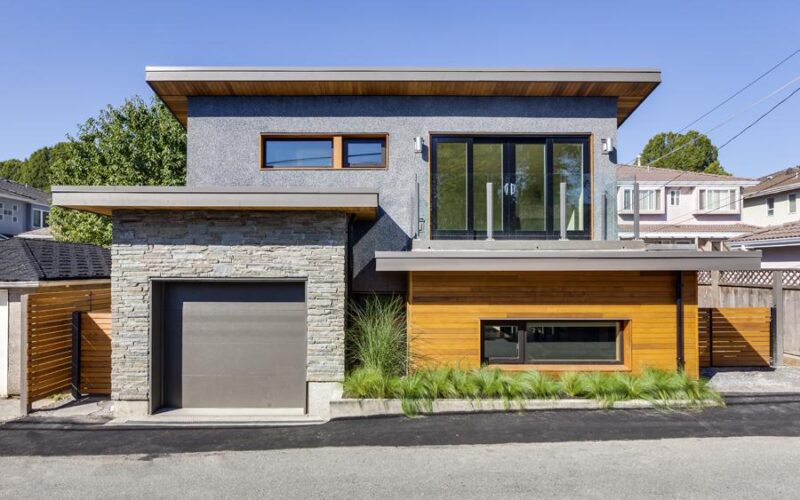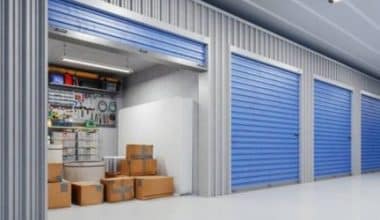Dwelling is a home where someone lives and it provides protection and shelter for individuals. Dwellings are houses, apartments, and condos. Tents, trailers, and igloos are also dwellings. Anything people live in is a dwelling. So if you have no dwelling, then you have no shelter and you’re assumably homeless. Read on to know the home insurance dwelling coverage for a condo, its cost, and how a dwelling extension works.
What Is Dwelling Coverage?
Dwelling coverage is a part of your homeowners’ insurance policy that provides coverage for your residence structures. They take care of damages caused by perils. However, they help to pay to repair, rebuild, or replace your home’s physical structure. Although a lot of people think of their dwelling as just the physical structure that they live in. However, this may help protect more than that. When you have the right coverage capital and adjust it regularly to account for any upgrades, renovations, and even inflation. This can help to protect what might be one of your largest financial investments.
What Does Dwelling Coverage Insure?
Dwelling coverage differs from region to region with the coverage policies. However, most policies cover a variety of threats that include; fire and smoke damage, lightning strikes, hail, and wind damage, burst pipes, falling objects, motor vehicle collisions, theft, and destruction.
They also cover other structures on your property, such as bungalows, pool houses, or detached garages. As long as you have a traditional homeowners policy that includes other structures coverage. But, if you have a condominium policy or a renter’s policy, the policy is unlikely to cover those additional structures. So try as much to check your policy to learn what perils they cover and what they do not cover.
What Does Dwelling Coverage Don’t Insure
Earlier, we said that the standard homeowner’s insurance policy does not cover natural disasters. But You can buy additional coverage or a separate insurance policy to help cover some of these additional perils. For example, you can buy water backup coverage to your existing homeowner’s insurance policy to help cover sewer backups. Or, you may decide to buy flood insurance to help protect your home against flooding. However, you can get some advice from your insurance provider on what options are available to you.
How Much Dwelling Coverage Do You Need?
Your dwelling coverage limit should cover the full cost to replace your home. However, the cost won’t necessarily be the same as the price you paid for your house. But depends on the features of your home and the building costs in your area. So you have to purchase coverage equivalent to 100% of the cost of rebuilding your home from scratch.
Also, note that building and repairing costs can grow over time. So it is important to keep a check on your coverage limits. Make sure they do not slip below the cost to replace your home. The National Association of Insurance Commissioners (NAIC) states that; if your dwelling coverage falls below 80% of the home’s full replacement cost. Your insurer may refuse to pay out your claim in full. Moreover, you can get an inflation guard endorsement that will increase your coverage limit annually. This will keep it in line with inflation. The National Association of Insurance Commissioners advises an insurance agent guidance.
How to Calculate Your Dwelling Coverage
If you want to calculate your dwelling coverage you need to consider all the structures you will replace. Some of these things include your floors, walls, windows, doors, roofs, ceilings, mechanical and electrical systems
Also, bear in mind that in addition to the replacement cost to rebuild, there may be other costs such as; tear-down and garbage removal also labor and construction costs. It is important to note that all your other homeowner’s coverages will be founded on the amount you have. For instance, if your dwelling coverage limit is $250,000. While your property coverage is limited to 50% of that amount, you will have $125,000 in personal property coverage. Coverages for personal property and loss of the use of your residence work in the same manner.
The NAIC recommends the following as the typical limits for these coverages:
- Personal property: 50% of the dwelling coverage limit
- Loss of use: 20% of the dwelling coverage limit
- Other structures: 10% of the dwelling coverage limit
How Much Does Dwelling Coverage Cost?
The average cost of homeowners insurance is at the rate of $1,765 per year. This reflects dwelling coverage of $300,000. Your rate may differ depending on where you live and how much coverage you need.
However, the average cost of condo insurance is at the rate of $506 per year. According to the National Association of Insurance Commissioners. While the cost of manufactured home insurance generally ranges from $500 to $1,100 per year. In general, the more coverage you need, the more the cost of your policy. You may be able to reduce your rate by choosing a higher deductible/multiple policies. Or you may shop around for quotes from several companies.
What Is Dwelling Extension Coverage?
Dwelling extension coverage is an additional amount of coverage allotted by the insurance company. This is to compensate for losses that exceed the dwelling coverage in the insurance policyholder’s list. So, if the policyholder’s coverage set limit is $200,000. And their plan allows extension dwelling coverage in the amount of another 50%. Then the insurance company will increase their payment to $250,000. This provides extra protection for the client even when the home’s rebuild costs exceed the standard policy limits.
However, you may decide to pay higher insurance dwelling coverage benefits beyond your policy limit. The extension coverage cost policies will still protect you from rises in reconstruction costs that arise after a disastrous event. In some cases, traditional homeowner’s policies will not consider tracking how inflation will affect building costs; or how a major disaster will heighten the need for building contractors and materials. This might inflate the normal costs for construction and rebuilding. Nevertheless, the extension coverage can provide guaranteed replacement cost policies. This will repay the loss as long as specific requirements are met in the policy.
Also, you can’t underinsure your home and still have the dwelling extension coverage. You have to pay up to the standard limit so that you may enjoy the benefit of the dwelling extension. Insurance companies require an insured to insure to value.
What Is Dwelling Coverage for Condo?
Condo dwelling coverage is a portion of an overall condo insurance policy than the dwelling coverage in the homeowner’s policy. It is a little different than the homeowner’s insurance on a house in terms of cost, coverage, and more.
The dwelling coverage for condo owners applies to just the cost of replacing the structure and items within your condo. If you live in a condo, you will always need to fulfill your HOA insurance requirements. Depending on the type of master policy your home runs.
How Much Dwelling Coverage Do You Need For your Condo?
If you have a condo, you won’t need the traditional homeowner’s insurance coverage. The homeowners association provides insurance for condos.
With a “bare walls in” policy, your HOA provides coverage for the building that houses your condo. This means your four walls are already protected under the HOA’s insurance policy. However, you should have dwelling coverage known as an HO6 policy. The policy pays to rebuild or repair the interior aspects of your condo which includes; floors, walls, cabinetry, and bathroom fixtures such as; a tub or shower as well as your personal property. This will amount to a considerable cost of condo coverage.
But if you have an “all-in” policy, your HOA will cover all aspects of your condo structure. This includes the interior and attached fixtures such as cabinets and bathroom sinks. In this instance, you would need insurance just for your personal property, such as clothing, furnishings, dishes, and electronics.
What Is Dwelling in Home Insurance?
Dwelling in home insurance is one part of your overall home insurance policy. It covers your home’s structure but not its contents or land. Dwelling coverage typically helps provides insurance for the home you live with the attached structures. It covers structures like your garage, a deck, or front and back porch. Features like installed fixtures and permanently attached appliances may also be covered by your dwelling insurance. If there be any damage to any of the attached structure. Your home insurance Dwelling coverage may help cover the costs to repair or rebuild it.
Conclusion
I hope you have learnt all about home insurance dwelling coverage for a condo, its cost, and how a dwelling extension works.
FAQS
What is an example of a dwelling?
An example of a dwelling is your house. A habitation; is a place or house in which a person lives; abode; domicile. The old house served as a dwelling for Albert.
What is the difference between a house and a dwelling?
The difference between a house and a dwelling is that a house is a structure serving as an abode of human beings while the dwelling is a habitation; a place or house in which a person lives; abode; domicile
What is dwelling in criminal law?
Dwelling in criminal law is the place where a person habitually stays for rest, comfort, and peace of mind.
Can I shoot a trespasser on my property Philippines?
You are legally justified to shoot them if you have a reasonable belief that the person will cause imminent harm or death to you or others.
Related Articles
- Business Structures: Different Types of Business Structures Explained
- CONDO: Definition and Comparison of Condominium With Other Housing Types
- FHA APPROVED CONDO: The updated list & How to get one (+ free tips)
- Best Business to Start with 300k: All You Need (+ Business Plans & Free Tips)
- What Is Dwelling Coverage: Difference Between Home Insurance And Dwelling






